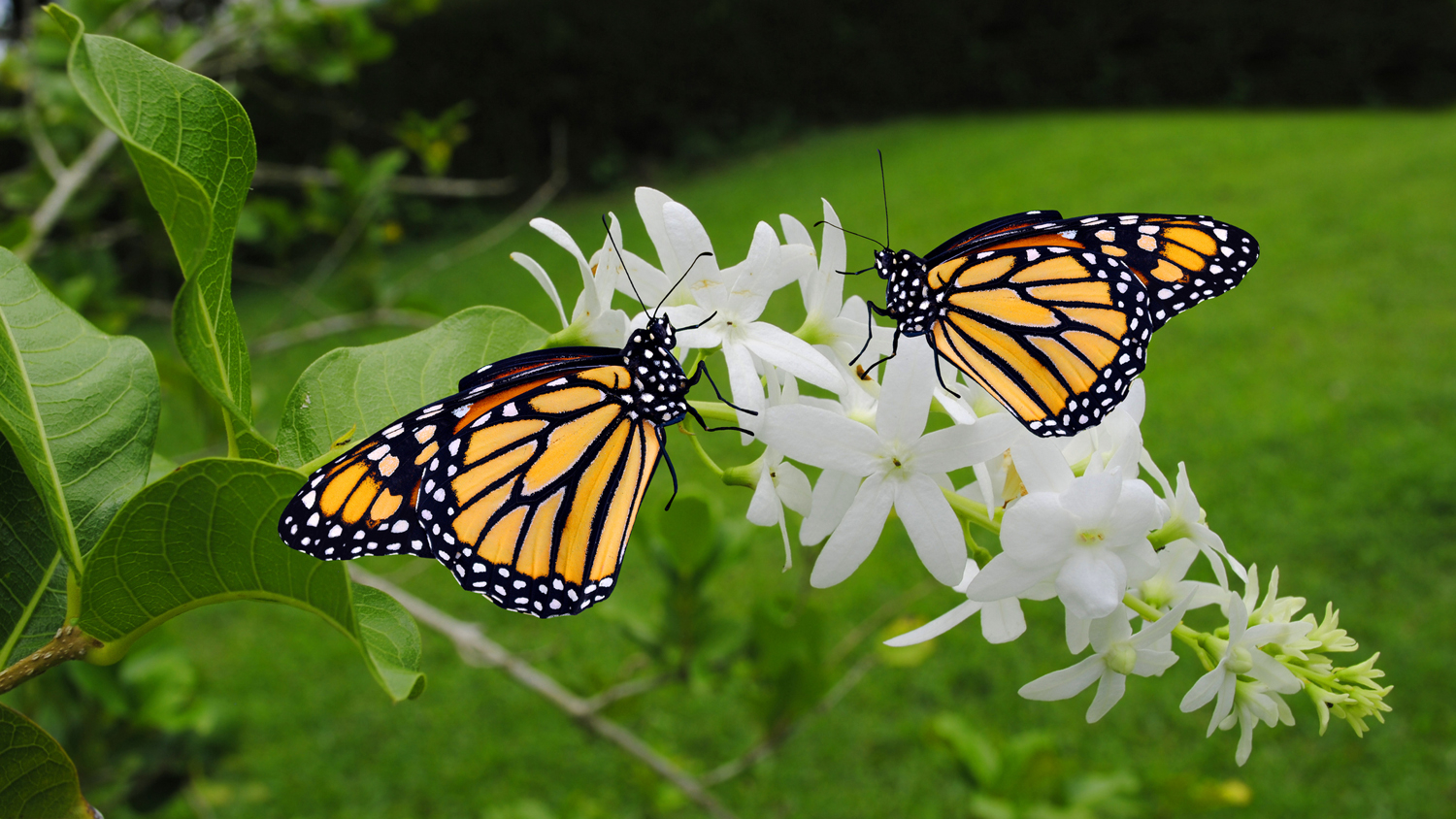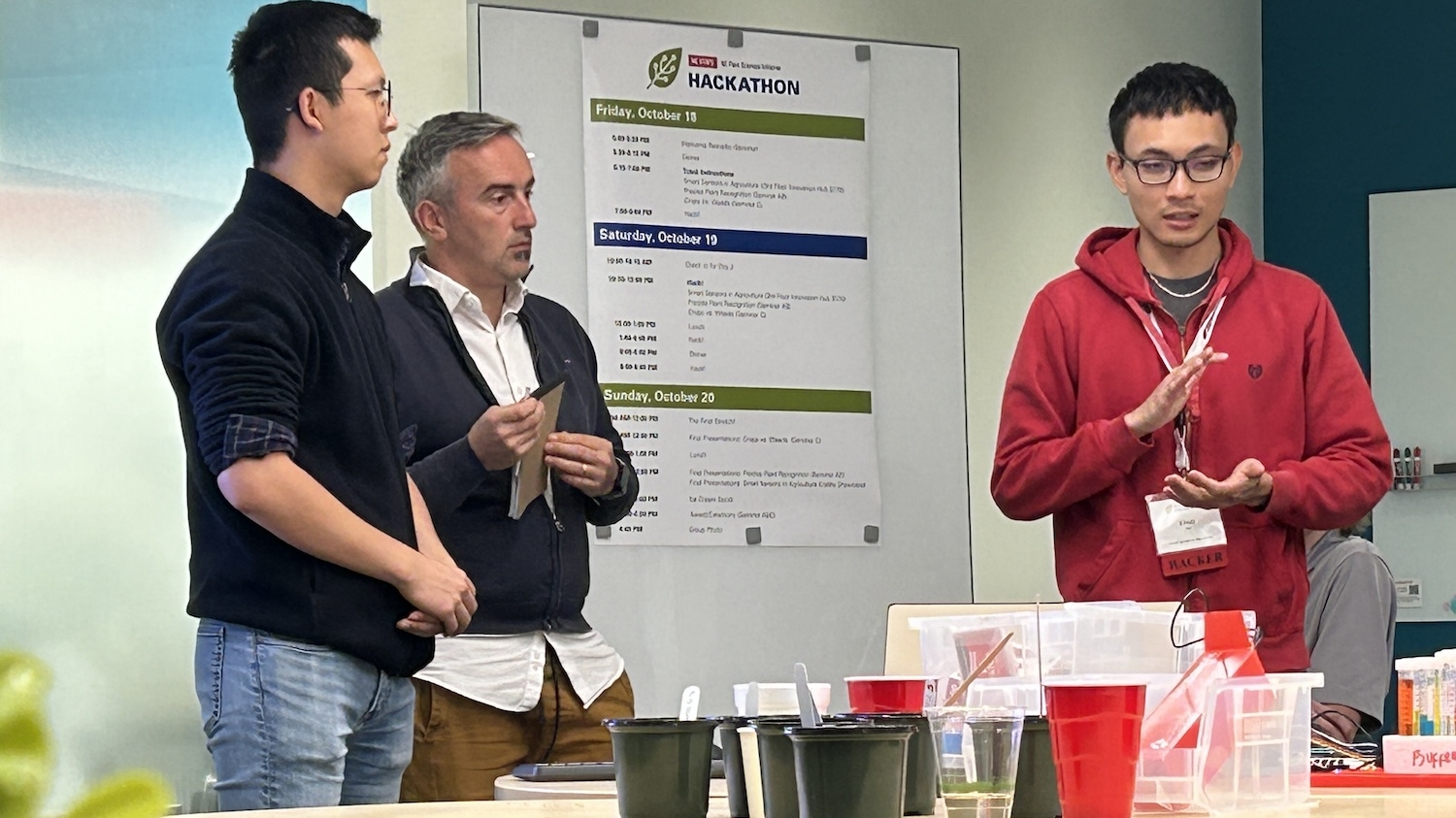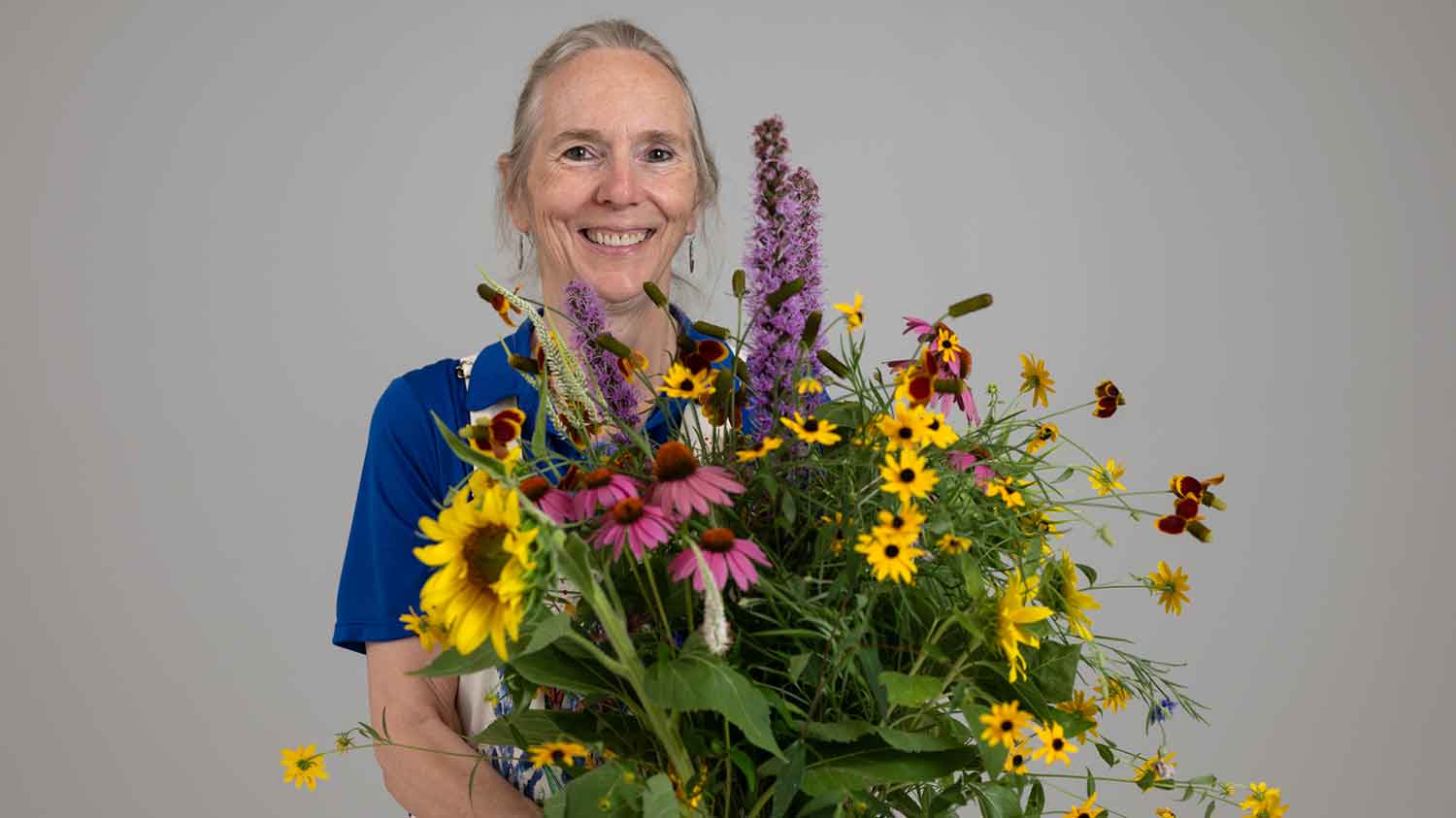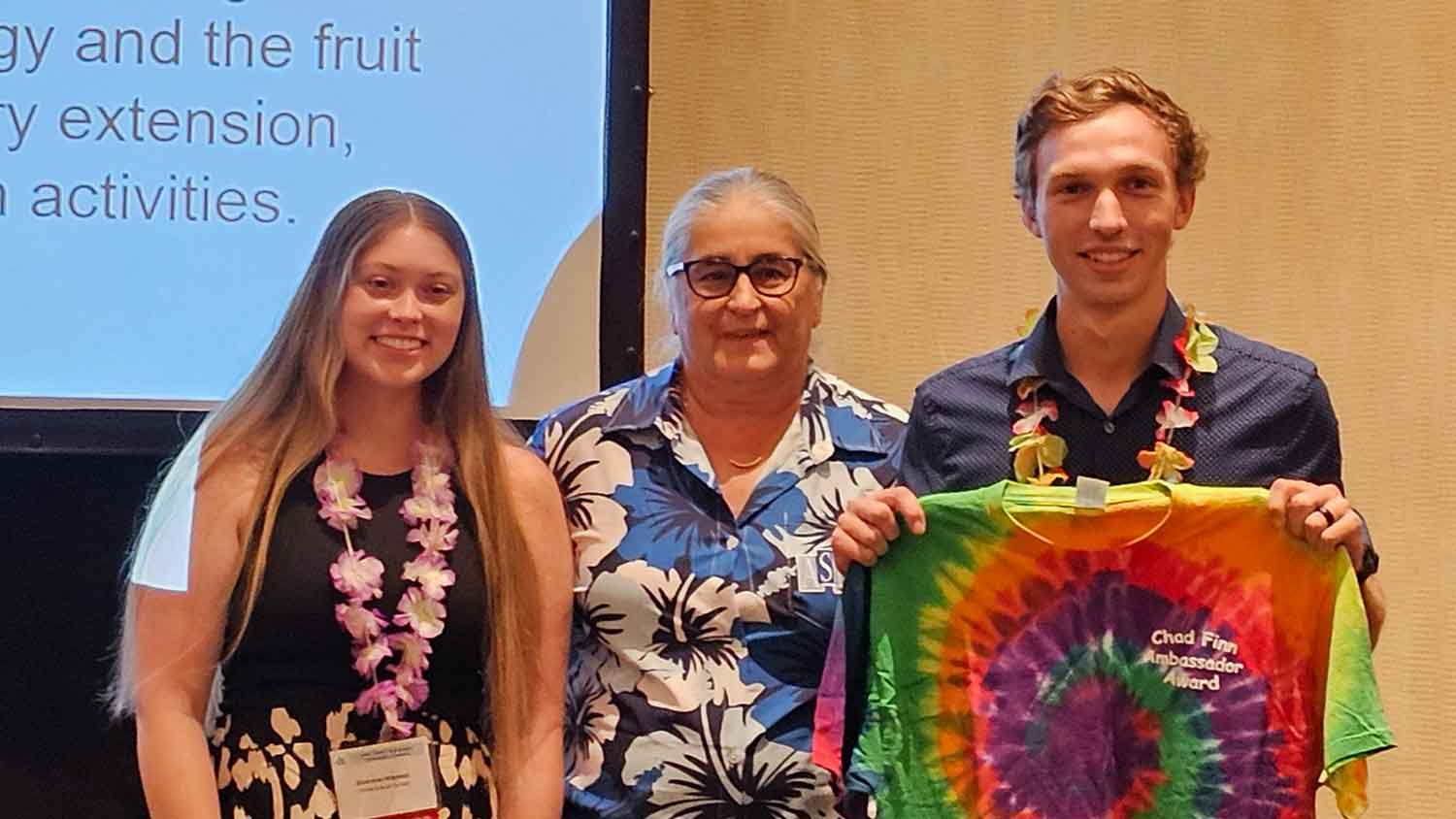Pollinator Gardens And You

In honor of National Pollinator Month, we’re chatting with Danesha Seth Carley, an associate professor in North Carolina State University’s Department of Horticultural Science and co-author of “Pollinator Gardening for the South: Creating Sustainable Habitats.“
We’ll dig into how aspiring gardeners and seasoned green thumbs can build pollinator gardens that house, feed and sustain birds, bees, butterflies and other pollinators essential to agriculture year-round. Seth Carley will also give us some insight into some of her favorite pollinators and their favorite plants to keep your home garden beautiful and buzzing.
Podcast Transcript
HOST:
In honor of National Pollinator Month, we’re chatting with Danesha Seth Carley, a research associate professor in NC State’s Department of Horticultural Science and co-author of “Pollinator Gardening for the South: Creating Sustainable Habitats.”
We’ll dig into how aspiring gardeners and seasoned green thumbs can build pollinator gardens that house, feed and sustain birds, bees and other pollinators essential to agriculture year-round. Seth Carley will give us some insight into some of her favorite pollinators and their favorite plants to keep your home garden beautiful and buzzing.
SETH CARLEY:
I am passionate about pollinators, and because I’m a horticulture professor, I come at pollinator protection and conservation from the horticultural side. So my interest in plants and landscapes and your garden and my garden and everybody’s green space is what brought me to want to write a book about how communities and individuals and schools and anyone who is equally passionate about protecting pollinators can build their very own pollinator garden.
HOST:
Her book covers a lot of ground, including what makes pollinators happy in 12 southern states. It’s a good step-by-step for those just starting or who need help managing their gardens. The point: creating spaces specifically for pollinators.
SETH CARLEY:
Almost everyone understands that pollinators are in danger. Whether it’s honeybees from mites and diseases, whether it’s our native bees for similar reasons, pathogens and diseases, it’s really important for everyone to pull together to want to help protect our pollinators. And I’ll pause right here and say when I talk about pollinators, I often accidentally default to saying bees. Bees are my favorite pollinators. They’re the most efficient pollinators. They’re the pollinators most people identify with. And just as a quick aside, and there is no quiz here, my favorite pollinator in the whole wide world are bumblebees. So I often will say bees, but when I talk about pollinator protection, whether I say bees or pollinators, I mean all pollinators. So butterflies, beetles and flies, but especially bees, of course. So I just wanted to make that statement right now.
People sometimes have their favorite pollinators. As I said, I do. And so when we talk about pollinator gardening and how important it is for bees because our native bees are in decline. But also a lot of people are familiar with the monarch decline as well. And so other butterflies, and as I said, other pollinators, are also impacted by climate change, urbanization, pests and diseases. And so I think it’s important that anybody who has any interest at all in protecting their favorite pollinators, be it birds, butterflies or bees. Everyone can put out habitat that helps support these pollinators because, as a whole, we can help reduce some of the harm that’s being done, you know, by climate change, by urbanization, by habitat loss.
HOST:
Anyone, from a seasoned gardener with an acre plot to a city dweller with 3 square feet, can create a green space.
SETH CARLEY:
So a lot of times, people who would like to plant pollinator gardens are a little intimidated for a number of reasons. One might be that they’re new to gardening and they don’t know what are the best plants to plant. I’m using air quotes, but since I’m on the radio, you can’t see that I’m using air quotes. And also, you know, sometimes you might have a very small yard, or maybe you live in an apartment, and so you feel like you’d love to plant some flowers to help protect bees and other pollinators, but you just don’t have the space. Or maybe you have an affliction that doesn’t allow you to do a lot of gardening in a garden that you might have but are unable to spend the time in for whatever reason. I actually suffer from arthritis in my hands, so I can’t pull as many leaves as I used to.
Those can all be challenges, but I want to make sure that everybody feels like they can contribute to pollinator gardens in any way. So one of my favorite ways to encourage folks to contribute to pollinator protection and habitat is by starting small. You don’t have to have a huge space. Even a container garden and I say a container garden because it sounds fancy, but if you just think about taking a pot and planting something that flowers in that pot and putting it on your patio, boom, as long as it flowers, you have pollinator habitat.
So, you know, there are a lot of different books and ideas online about how to plant a fabulous contained planter. And that might be a fantastic way for someone to start pollinator gardening by having a large container or a small container, planting some things in that container that bloom, and having it outside. Then you’re contributing to pollinator protection, and hopefully, it’s not too much to manage. You can water them easily because they’re contained. There’s not a lot of weeding involved, we hope. And so really anybody can pollinate or garden as big or as small as you like.
HOST:
As for what you put in those containers, there are a few elements to consider including.
SETH CARLEY:
So when we are thinking about crafting a pollinator garden, not all gardens or pollinators are created equal. However, there are some elements that we encourage people to put into their pollinator garden that really do benefit all pollinators as a whole. Everything from, again, bees, bats, birds, butterflies and everything in between. So a few of those elements include, of course, first and foremost, forage for these pollinators to eat, right? So if we’re talking about bee protection, in this case, I am specifically talking about bees. They are out there in your garden looking for one of two things when we’re talking about feeding. They’re looking for either pollen, or they’re looking for nectar. Now, most of our other pollinators are also looking for either pollen or nectar, but depending on the kind of pollinator you want to bring to your garden, you might lean more toward plants that produce pollen or plants that produce nectar.
So, for example, hummingbirds are often looking for nectar. Same with butterflies. They don’t have a lot to do with pollen. So if you really want to influence the butterfly populations, you’re going to want to plant plants that produce a lot of nectar. Either way, though, all boats rise with the tide and plant flowers that produce good-quality pollen and/or good-quality nectar. And before I go into the other elements, I want to make a statement here. Not all plants are created equal in terms of pollen quality or nectar quality. So since pollinators don’t read Facebook, it’s always a good idea to look at legitimate scientific sources when you’re thinking about what plants to put in your garden.
It’s always good to plant plants that have good quality pollen and nectar because it’s not all created equal. Okay, so that’s number one. We want to make sure that we have plants that our pollinators can feed on. Number two, we want to make sure that we have a place for them to live. So ideally, if we’re trying to protect pollinators, we don’t want to be spraying a lot of chemicals in our yard. And we want to discourage our neighbors, gently, if we can, from spraying their yards because we want our pollinators to be able to live in the same space. Often, a lot of bees nest in the ground, and so if you have a plastic mulch down, which we discourage, you’re going to smother those bees, and they won’t be able to survive.
If you’re building a pollinator garden and you want to add a design element, add warm-season grasses like switchgrass or broomsedge. Bees actually will nest in those hollow stems, and so that’s another place where bees can live.
So we have food in regards to the types of plants we’re putting in. We have a place for them to nest in our yard if possible. And then something a lot of people don’t think about, and I didn’t either until I started doing pollinator research, is if you can have a water element in your yard, birds and bees really appreciate having that water. And we have a lot of different ideas about how to add a water element to your yard that discourages mosquitoes but encourages bees and butterflies. You can even take a small shallow dish, put some river stones in it, fill it with water, or just let the rain fill it with water. It’s not so deep that mosquitoes will use it, but it’s shallow enough that the bees and butterflies and birds can land on those stones and drink the water.
So we want to put plants that bring in our pollinators with pollen and nectar. We want to make sure we have safe spaces for them to live in without adding a lot of pesticides. Don’t heavily mulch areas that bees are using. Add some ornamental, warm-season grasses to your yard to allow for the nesting bees to nest in those spaces. And then, if you want to be creative, add a water element to your garden.
HOST:
If you’re looking for a few plant recommendations, Seth Carley can help out as long as you don’t ask her to pick a favorite.
SETH CARLEY:
Coneflowers echinacea, they’re one of my very favorites. They can be heavily bred, so I recommend that people go with the straight species, not something super flashy, not the double-flowered, highly bred ones. They are beautiful, of course, and they’re wonderful in a garden, but they often produce less pollen, or if they’re producing pollen, it’s very hard for the bees to access it because of all of those petals. So straight species coneflowers.
Another very favorite is Asclepias, the milkweeds. So butterfly weed is one of my favorites. I saw a huge patch blooming this morning on my way to work. They’re fairly short in stature. These are all perennials, by the way, and they’re all natives of North Carolina. These have loud, orange flowers, and they produce rich nectar that will bring all kinds of pollinators to your garden. I love asters. They start blooming later in the summer, but then they just go like gangbusters all the way through November. And one of the things I like about asters is that you can get them in many different varieties, so you can get short ones, you can get tall ones, you can get white ones, you can get purple ones. So just be aware that they’re not all created equal, as I said earlier.
I recommend plants like asters or even goldenrod. Some of the plants people even consider a little bit weedy species are really great for pollen and forage, even late into the fall. And then, of course, those coneflowers that you planted in April are going to be blooming through the summer, and then, as they start to put seed heads out in fall, they’re going to bring your songbirds in. I’ve often seen goldfinches feeding on the coneflower heads, so you have provided habitat not just for your bees and butterflies with those coneflowers, but then later in the fall, if you don’t deadhead your coneflowers, you’ll also see songbirds come, so it’s a win-win.
Oh, I really love mountain mint. I find that it can be hard to find, but it’s a really lovely, sturdy perennial here in North Carolina. It does a little better in the mountains, in the cooler areas, than it does here in Raleigh with the heat, but it also produces a lot of nectar and pollen, and all types of pollinators really love it. It’s not a real flashy flower, but it’s a really lovely silvery-leafed mint. One other thing that I’ll mention that I really love to incorporate into pollinator gardens, and these are not native to North Carolina, but herbs, herbs of all kinds.
I have rosemary that grows in my garden all year round. I have thyme that grows in my garden all year round. You can do basils, and you can do mints, as I said, although mints can get aggressive, so you might want to make sure that you’re careful where you plant them. Contain them. Lavender is another lovely herb. So not only are you growing herbs that you can use then for cooking, but also when they flower, they bring pollinators, and they’re also very resilient in the heat that can come on in the summer in North Carolina.
HOST:
A simple start can help provide for our bird and insect friends that need food, shelter and a place to rest in urban and rural areas.
SETH CARLEY:
You can start with that container plant or even just start with a small space in your yard that you feel you can manage and then just start to add to what you have each year if that suits you. You don’t have to do it all at once.
HOST:
Thank you for joining us on Farms, Food and You. This podcast is a product of the College of Agriculture and Life Sciences at North Carolina State University. If you would like to support the show, please share this episode on social media and leave a review on your podcasting app of choice. Let’s talk soon!
This post was originally published in College of Agriculture and Life Sciences News.
- Categories:


